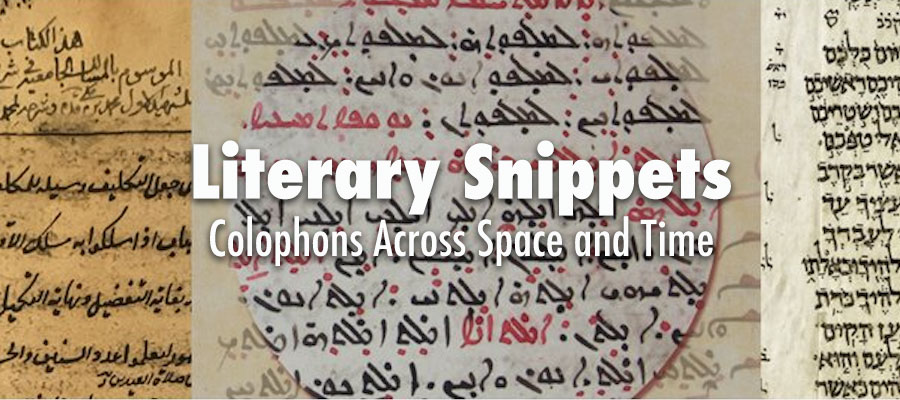The colophon, the ultimate or “crowning touch” paragraphs of a manuscript or a book, provides readers with a the historical context in which the scribe produced the manuscript (or the publisher, a book). At its most fundamental level, the colophon gives us the “metadata” of the manuscript: who was the scribe? When and where was the manuscript produced? For whom was it produced and who paid for it?
But colophons are far richer. They are literary works in their own right, having a style and rhetoric independent of the main literary text of the manuscript. Some are assertive, providing contextual data about the scribe/publisher and manuscript/book; others are expressive, demonstrating the scribe’s feelings and wishes. Some are directive, asking the reader for an action; others declarative, providing all sorts of statements about the scribe/publisher or even the reader. The latter sometimes provide historical facts otherwise lost to histories: wars, earthquakes, religious events, legal agreements, etc.
The aim of this edited volume is to bring together scholars from various disciplines to study colophons in various languages and traditions across space and time. Topics may include:
- The colophon as a literary genre.
- Typology of colophons.
- The formulaic structure of colophons.
- Factoids found in colophons.
- How can colophons or confirm help us reconstruct historical events?
- Colophons born in print publications or born-digital.
Contributors are expected to submit, in addition to their paper, text editions of a selection of colophons with an English translation. These will appear in a companion volume, a Reader.
Proposals for consideration due December 15, 2021. Final papers due April 1, 2022.
Editors: Sabine Schmidtke and George A. Kiraz
